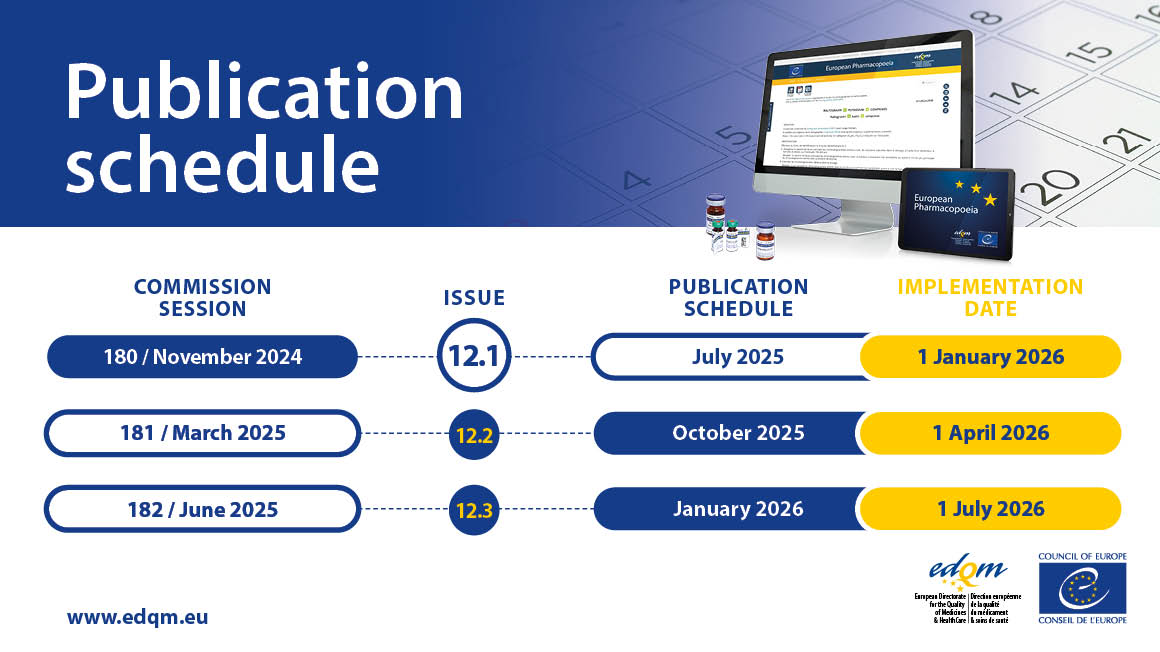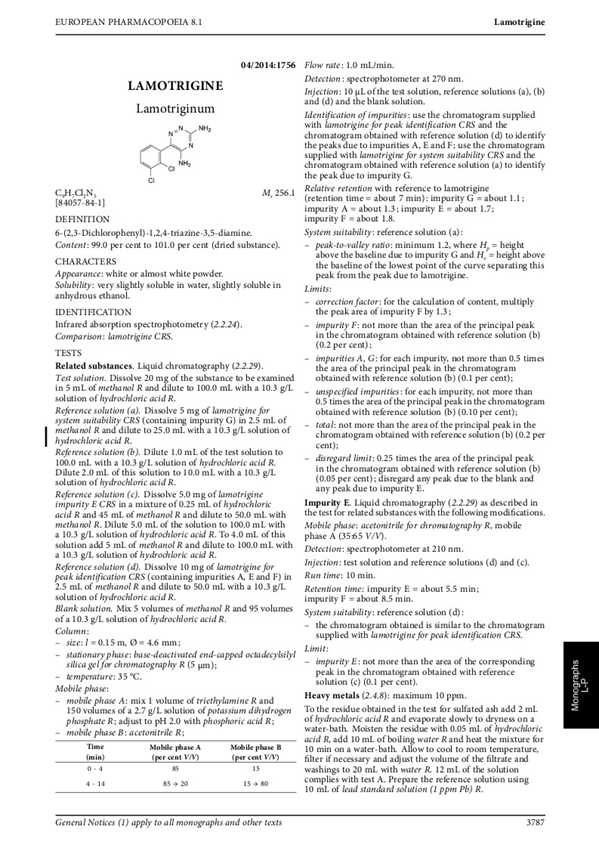2. Role of modern pharmacopoeias
Role of modern pharmacopoeias
Today, the basic purpose of a pharmacopoeia remains the same: to ensure medicines are of good quality. However, the means of reaching this goal have changed fundamentally. Medicines are very rarely produced in pharmacies. Almost all medicines in developed countries are industrially produced. Therefore, recipes for medicines are no longer listed in a pharmacopoeia. The essential elements of a modern pharmacopoeia such as the European Pharmacopoeia (EP) are called monographs. A monograph is text on a specific subject such as:
- Quality standards for active substances.
- General standards for dosage forms.
- General standards for manufacture of medicines.
- General methods of analysis of medicines.
- Finished products (only a few).
European Pharmacopoeia (Ph. Eur.) 11th Edition at a glance
- Legally binding in 39 European countries and applied in more than 120 countries worldwide
- Provides new and revised texts
- Delivers crucial information for European markets earlier than any other Pharmacopoeia
- The 10th Edition (including Supplement 10.5) contains 2447 monographs (including dosage forms), 378 general texts (including general monographs and methods of analysis) and about 2800 descriptions of reagents (European Pharmacopoeia (Ph. Eur.) 11th Edition - European Directorate for the Quality of Medicines & HealthCare (edqm.eu))

Picture 1: European Pharmacopoeia - 12th Edition publication schedule (edqm.eu);
Source: c38a55b8-2b4e-1d55-6633-a04427a0a808 (1160×652)
It is noteworthy that, in March 2014, the European Pharmacopoeia Commission decided, based on the results of a pilot project, to start working on monographs for medicinal products containing chemically defined active substances. This will expand the scope of the EP.
A series of general monographs (see Figure 2) for manufacture of medicines are given in the EP. In addition, the EP contains general methods for analysis of substances and medicines. Such methods may be used by the pharmaceutical industry also for substances and medicines not described in the pharmacopoeia. For dosage forms (e.g. tablets, capsules, injections, etc.) some general requirements are given, For example, on how much variation in weight or content among individual tablets in a batch is acceptable.
The quality standards for active substances comprise the majority of the information in the pharmacopoeia. They are noted in both the monographs and general methods sections, and contain analytical methods to identify the substance and to evaluate the quality and the quantitative strength.

Figure 2: Example of a monograph from the European Pharmacopoeia for the active substance ‘Lamotrigine’ (Pharmacopoeia Europaea, Ph. Eur. 8th. Edition).